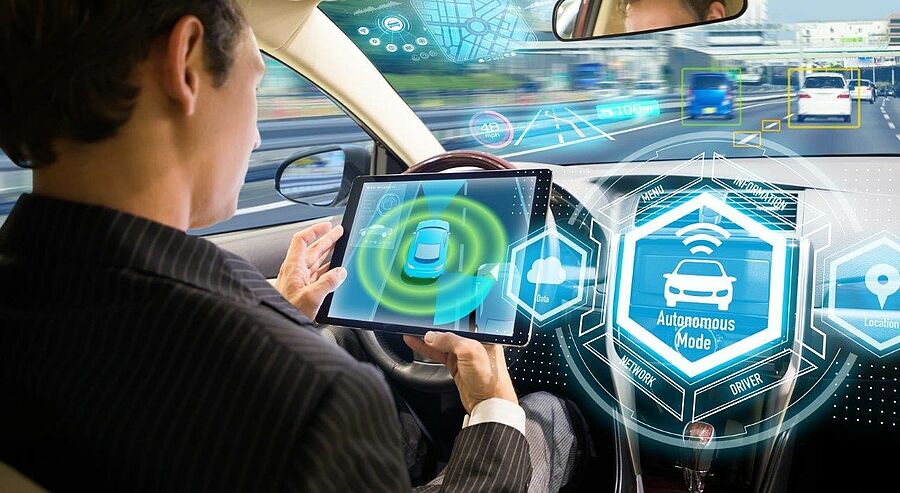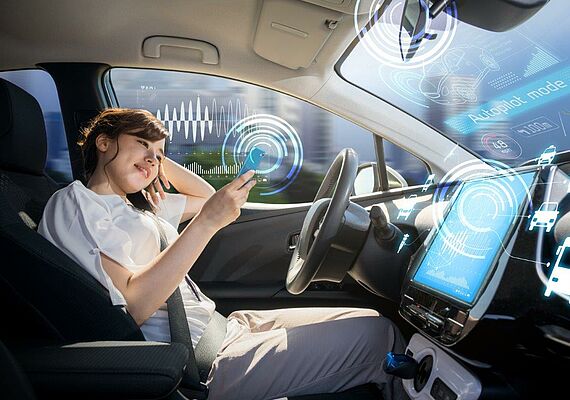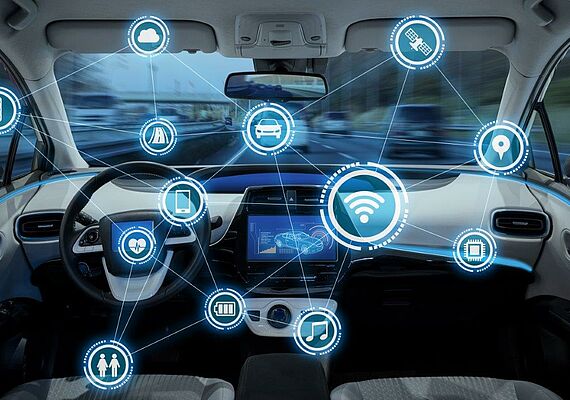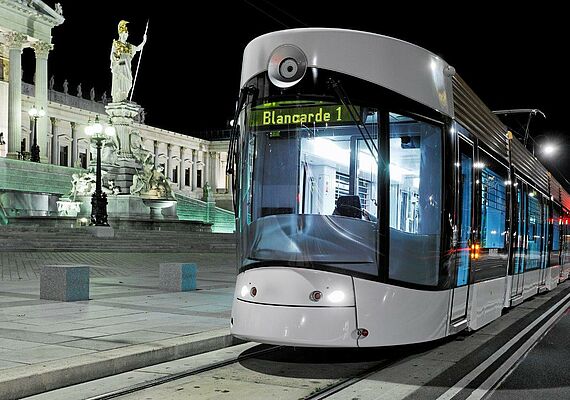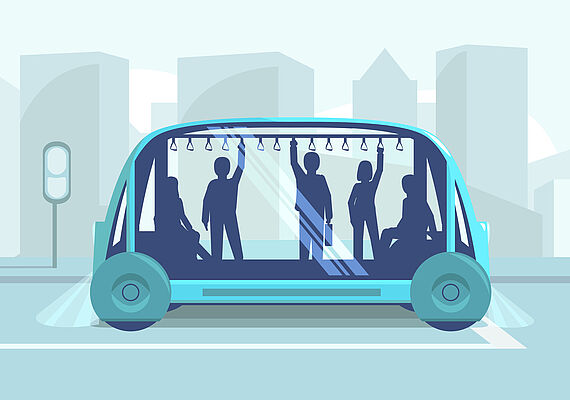Automated Driving
Automated Driving is considered as a key aspect of the mobility of the future. In order to develop the full potential of automated vehicles, a holistic view of the mobility system for people and goods is needed.
This includes multimodal approaches, technology acceptance and user behavior analysis, new test methods, and the explicit use of the opportunities of digitization. The aim is to set up Automated Driving where it makes sense and creates added value.
Automated driving at AIT
The AIT follows a holistic system approach in the development of new technologies for Automated Driving and brings in its expertise from four different centers in a synergetic manner. This covers the development of vehicle components, the investigation of infrastructure requirements and their consequences as well as the latest methods for testing of intelligent, safety-critical automated systems. In addition, the AIT is able to analyze overarching effects on the overall traffic system as well as traffic safety. A user-centered view of new interaction interfaces, including the experience of automated driving, helps to expand the design and validation process of Automated Driving.
Synergetic bundling of competences from four different ait centers offers a holistic concept for automated driving:
Digital Safety & Security
Increasing security and reliability of software and systems is one of the key research areas at the Center for Digital Safety and Security, without which Automated Driving would be unthinkable. Research activities range from highly reliable 5G-based communication links, through verification and monitoring of traditional and AI-based systems, to privacy, standardization, and development of certification policies. The Center also has an established position in national and international security research programs.
Transport Technologies
The Center for Transport Technologies investigates the efficient and comprehensive integration of automated vehicles into the multimodal mobility system and evaluates the impacts by means of data driven prediction, quantitative and qualitative models and simulations. In addition, aspects such as mobility behavior and modal shift are explored as well as their effects on traffic infrastructure, road safety and traffic management. Our solutions and services support public authorities and the industry in the implementation of new mobility and logistics applications with regard to automated transport.
Technology Experience
The user of technology is always in the focus of the Center for Technology Experience. Through newly developed methods, it provides information on the future acceptance of Automated Driving and can ensure a value-oriented design process by measuring and modeling the user experience. Special effects (such as de-skilling) play an equally important role as new design concepts for the social interaction of (semi-) autonomous systems with humans. Novel approaches of persuasive interaction techniques and context-sensitive visualizations round off the service portfolio of the Center.
Vision, Automation & Control
The Center for Vision, Automation & Control has extensive expertise in Intelligent Vision Systems with a focus on camera-based sensing for assistive and autonomous systems to assist the driver as well as to increase safety and efficiency. Areas of application are various industrial sectors, construction and agriculture as well as the transport and railway sector with mobile machines and rail-bound vehicles.
Center for Energy
Mobility research at the Center for Energy stands for a holistic view of the transportation system – from passenger transport to freight transport; from walking, cycling, car traffic, and public transportation to rail transport, inland waterways, and aviation. Emerging technologies such as drones or hyperloops must also not be overlooked. The transport optimization and logistics team develops new concepts, applications, and methods to overcome the conflicting global goals of maximizing flexibility while minimizing negative impacts.
Cooperations with the industry
In various projects, AIT develops assistance systems and autonomous systems together with well-known manufacturers from the railways (public transport), agricultural machinery, construction and special vehicles sectors. In addition to the system conception, specific sensor & control SW development, another focus is the validation and optimization of driver assistance systems as well as the review of test plans for product development. The question of meaningful and attractive replacement activities for drivers of (semi) autonomous cars and trucks will also be investigated on behalf of vehicle manufacturers. In addition, the AIT supports various public and industrial stakeholders in establishing industry norms and highlighting the implications of different standards in the field of Automated Driving.
